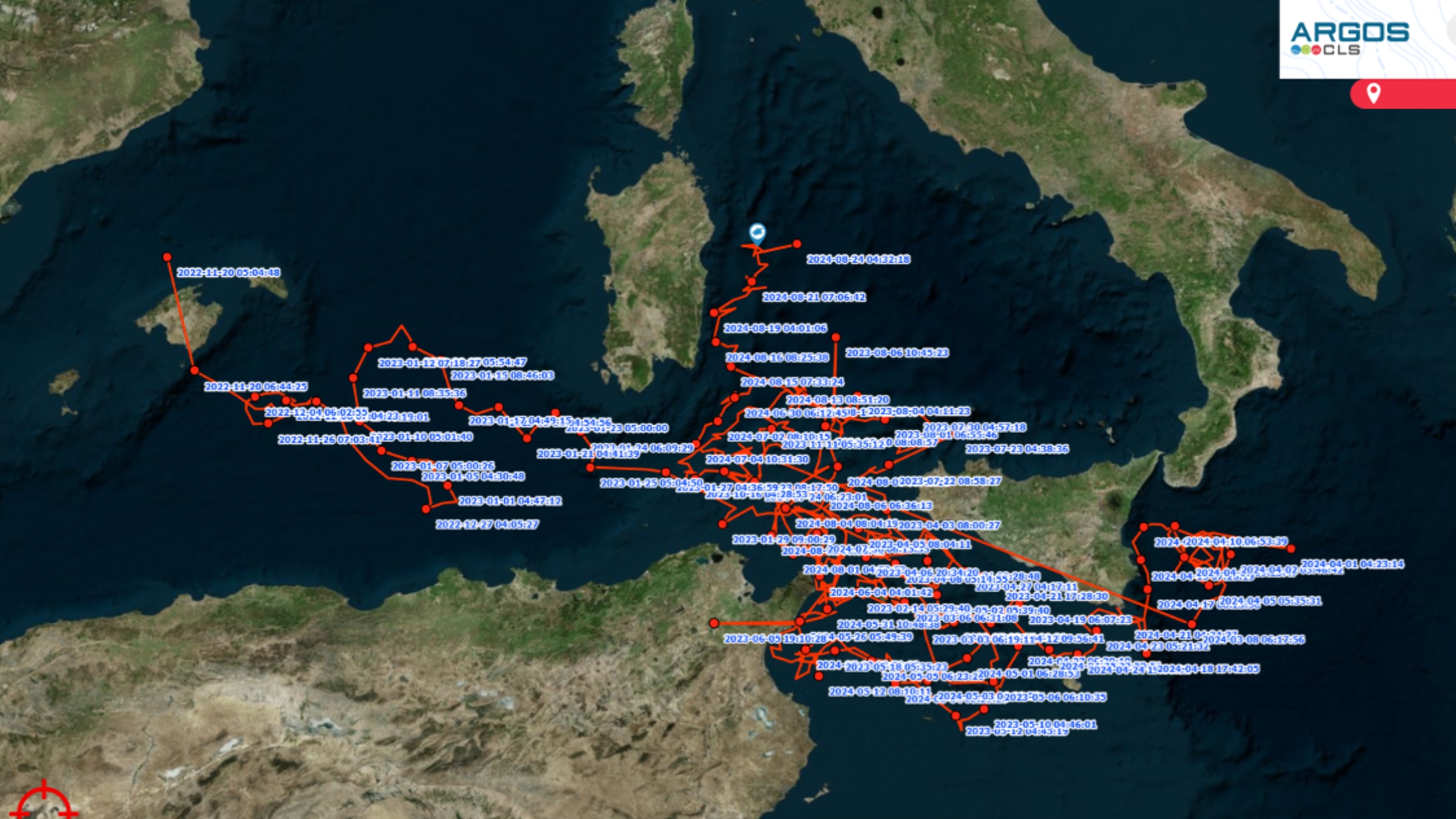Through its OCEMIB project, the Palma Aquarium Foundation is continuing to make significant strides in its efforts to protect threatened marine wildlife and can now offer exciting news about rescued and rehabilitated sea turtles. Working in collaboration with the Oceanographic Foundation’s SANIMAR project, which donated tracking devices, Jarana, Semir, and Orellana were successfully released back into the ocean in 2022 and 2023. Each turtle was equipped with GPS satellite tracking devices, a highly useful tool for their study and conservation.
In this post, we relate these turtles’ inspiring stories and the crucial role satellite technology plays in guaranteeing their wellbeing and survival in the sea.
How does the satellite tracking of released turtles work?
Due to the increasing number of sea turtles in the Balearic Islands being rescued with amputations caused by ghost fishing nets, the Palma Aquarium Foundation sought the collaboration of with the Oceanogràfic Foundation’s project to support marine life rescue and conservation work at its ARCA del Mar centre (SANIMAR). This initiative is funded by the Biodiversity Foundation of Spain’s Ministry for Ecological Transition and Demographic Challenge (MITECO by its Spanish initials) as part of the Recovery, Transformation, and Resilience Plan (PRTR by its Spanish initials), financed by the European Union – NextGenerationEU. Actions centre on the tracking of amputee sea turtles, in order to study their capacity for survival.
The satellite transmitters, which have been supplied by the Oceanogràfic Foundation, are attached to the turtles’ shells using epoxy resin, ensuring no harm is done to the animals. After a few months, as the turtles grow and shed their shells, these devices fall off naturally. Each time a turtle surfaces to breathe, the transmitter sends a signal that records and transmits its location to a specialised application.
The information we receive is vital: if the signals are active, it means that the turtles are alive, allowing us to estimate their survival. What’s more, tracking their migratory routes helps identify areas where turtles face the greatest threats, such as bycatch from fishing, and we can therefore channel conservation efforts to these critical areas.
With satellite tracking, we can also study how turtles use their habitat. Turtles feeding in the Balearic Sea may originate from the Atlantic or the Eastern Mediterranean. This system helps us determine whether they remain in the Western Mediterranean, migrate to the Eastern Mediterranean, or, in some cases, cross the Straits of Gibraltar into the Atlantic.
Tales of rehabilitation and recovery: Jarana, Semir and Orellana
When Jarana and Semir arrived at the Palma Aquarium Foundation’s Recovery Centre, they were in a critical condition. Both turtles had been rescued from ghost nets: Jarana in late August and Semir towards the end of September 2022. The severity of their injuries meant that the front left flipper of both animals had to be amputated at the La Vileta Veterinary Clinic. Once again, these injuries had been caused by marine debris, especially abandoned ghost nets, which today constitute one of the greatest threats in the Balearic Sea.
Following months of rehabilitation work, Jarana and Semir were returned to the sea from the Sa Font de n’Alis cove in the Mondragó Nature Park on 19th November that same year. This release was not just a milestone event, coinciding with the 30th anniversary of the declaration of Mondragó Nature Park as a protected natural space, but also represented a major achievement for marine conservation. Both turtles were fitted with GPS satellite tracking devices provided by the Oceanogràfic Foundation.
VIEW ROUTE SEMIR (19 NOV 2022 10-08-2024 PARQUE NATURAL DE MONDRAGÓ FONT DE N’ALIS)
VIEW ROUTE JARANA (19 NOV 2022 HASTA ACTUALIDAD PARQUE NATURAL DE MONDRAGÓ FONT DE N’ALIS )
On 30th May 2024, the Palma Aquarium Foundation also celebrated the release of Orellana on Marqués beach, in the Colonia de Sant Jordi. Orellana was rescued on 7th September 2023 in Sa Romeguera, after her front left flipper and neck became entangled in a ghost net. Thanks to the collaboration of La Vileta Veterinary Clinic, Orellana survived after the amputation of the injured flipper. Once she had recovered, Orellana was released back into the sea, equipped with a tracking device provided by the Oceanogràfic Foundation, and until July 2024, we were able to track her moves after being returned to the sea.
VIEW ROUTE ORELLANA (30/05/2024 – 16/07/2024 PLAYA DEL MARQUÉS, COLONIA DE SANT JORDI)
The Palma Aquarium Foundation, through the OCEMIB Project and in collaboration with the Oceanogràfic Foundation, is demonstrating the importance of technology and teamwork in protecting marine life. Thanks to satellite tracking, we are gaining a better understanding of rescued turtles, their routes and the threats they face, therefore securing a safer future for them.
Each release, such as those of Jarana, Semir, and Orellana, is a further boost to our commitment to sustainability and the protection of the marine ecosystem.


 "
"
